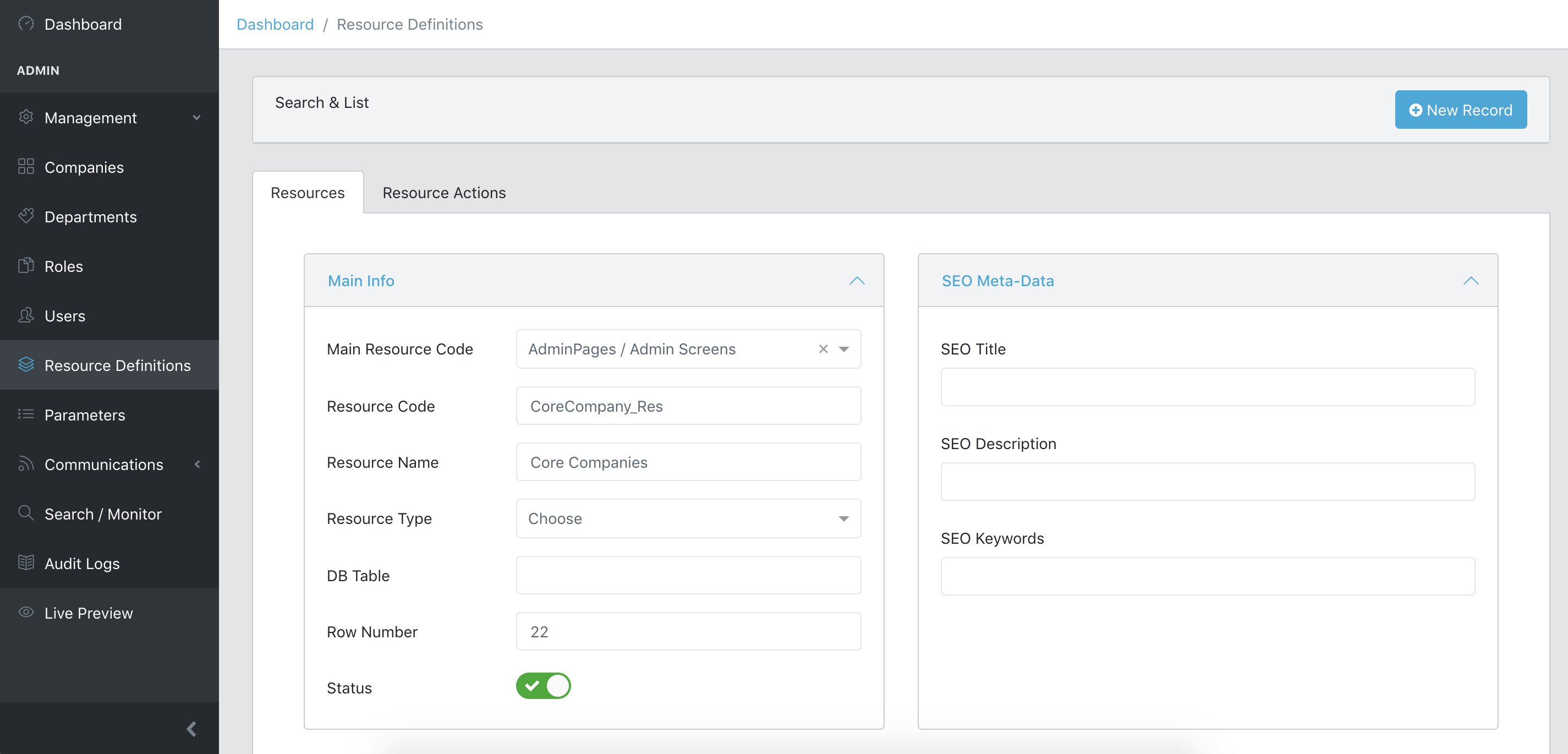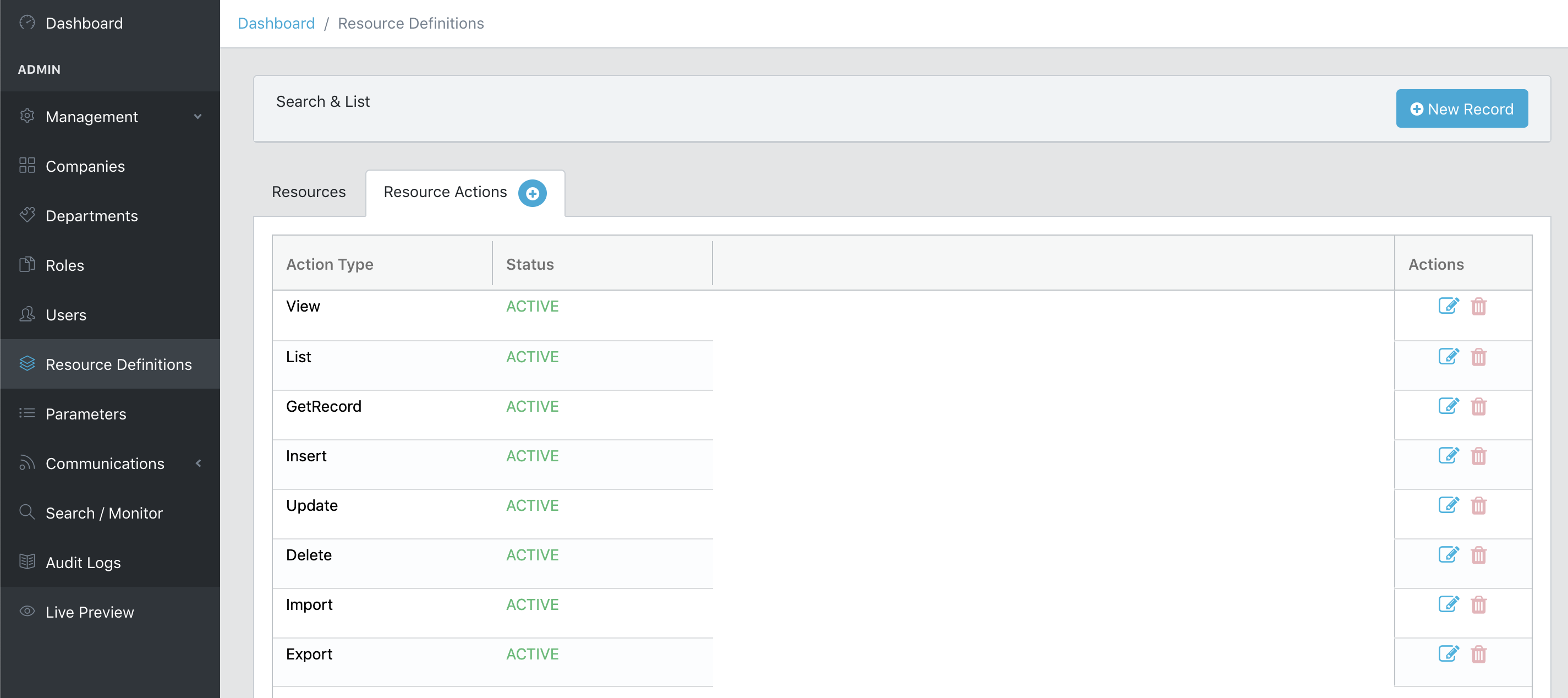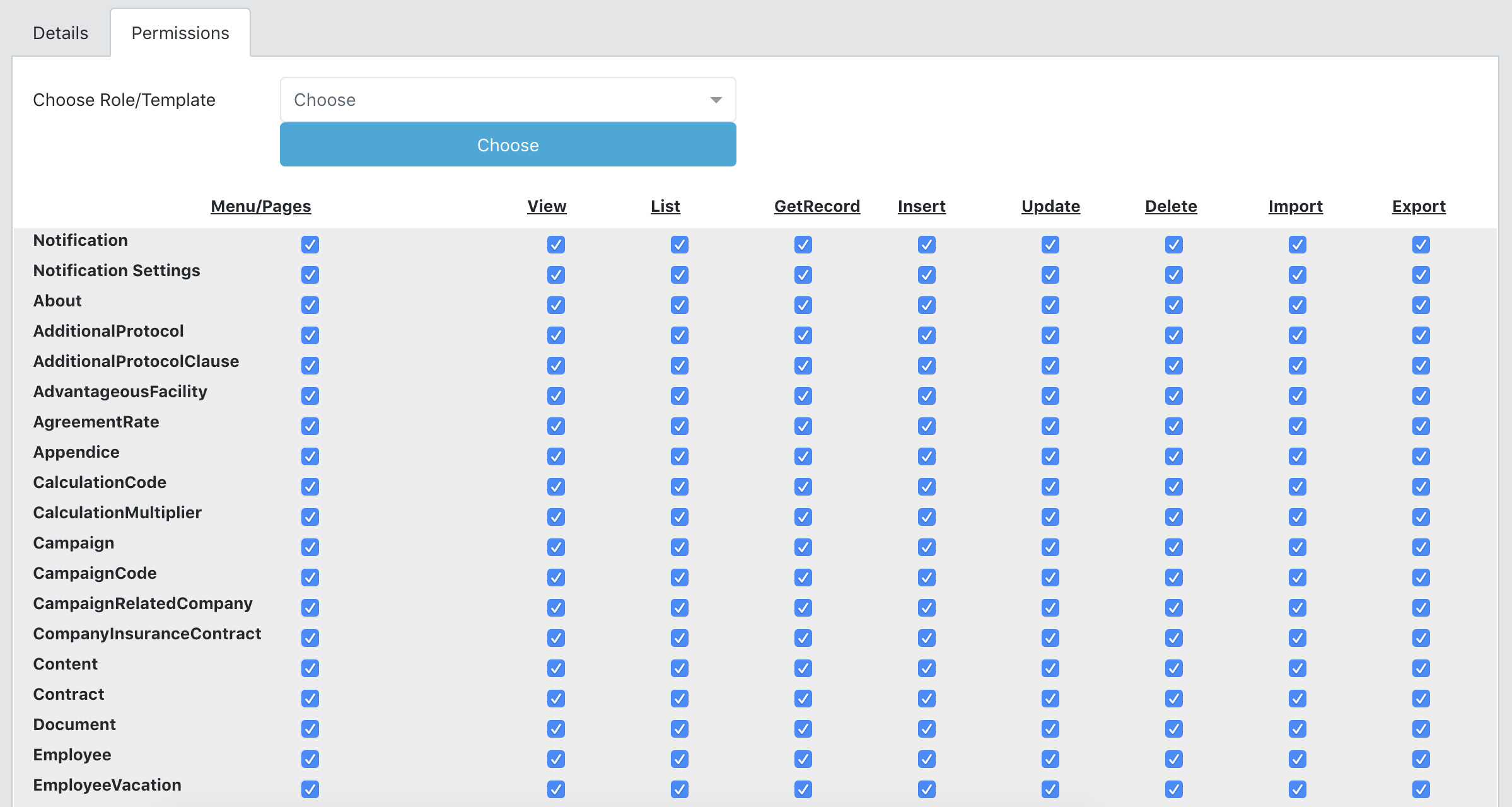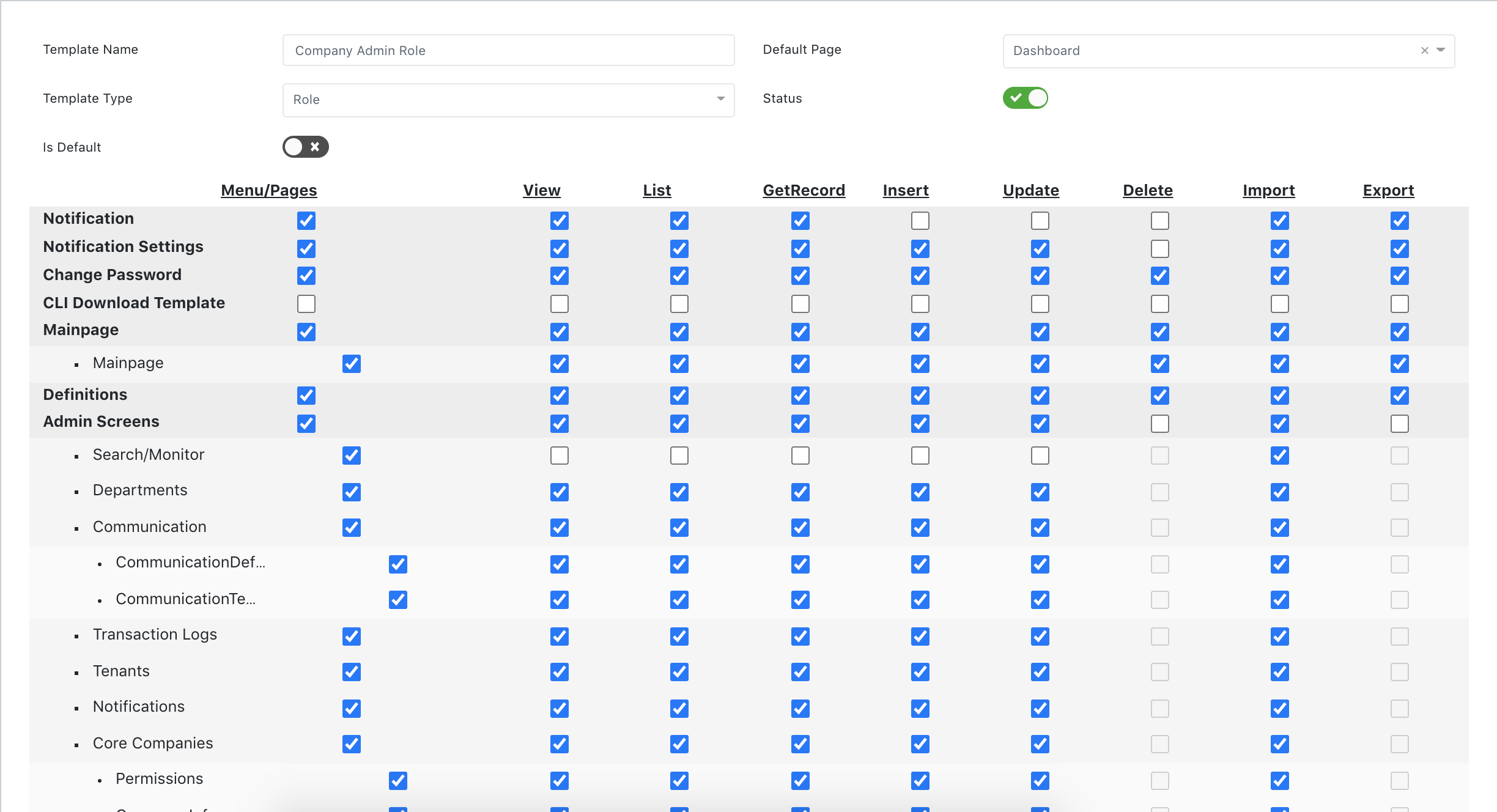Authentication & Authorization
IdentityServer4
Identity Server 4 is the newest iteration of IdentityServer, the popular OpenID Connect and OAuth Framework for .NET, updated and redesigned for ASP.NET Core and .NET Core.
Permission Management
Organization, User, Role, Resource and Action based management is provided.
Resource + Action Structure
Every page, tab or any entity/transaction that needs to be authenticated has/should have a resource code assigned which is stored in authResources db table.
Each resource code has actions assigned which are stored in authActions db table.
In both backend and UI authorization system use these resource code and action properties to manage permissions of a user.
Management / Resource Definitions:

Resource's Actions:

If a Resource's permission scope (ie: status, Actions) changes, all related users assigned sign off automatically from the server cache. And those users are expected to log in again.
Backend
{YourModelName}Controller.cs
You should set [Resources("Model_Resource_Code")] to authorize all controller and its methods. You can relate additional resource codes to a method.
namespace Microservice.API.Controllers
{
[Authorize]
[Route("[controller]")]
[Resources("Model_Resource_Code")]
public class ModelController : BaseController
{
private readonly ModelRepository _mainRepository = new ModelRepository();
private readonly ModelValidator _ModelValidator = new ModelValidator();
private readonly HubContext _hubContext;
public ModelController(HubContext hubContext)
{
_hubContext = hubContext;
}
[HttpPost("list")]
[ClaimRequirement(ActionType.List)]
public ResponseWrapper List([FromBody] RequestWithPagination<Model> request)
{
ResponseWrapper genericResponse = new ResponseWrapper();
genericResponse.Data = _mainRepository.List(request);
genericResponse.Message = DistributedCache.Get(Messages.PROCESS_SUCCESSFUL);
genericResponse.Success = true;
return genericResponse;
}
[HttpPost("getById")]
[ClaimRequirement(ActionType.GetRecord, "Additional_Resource_Code1", "Additional_Resource_Code2")]
public ResponseWrapper GetById([FromBody] Model request)
{
ResponseWrapper genericResponse = new ResponseWrapper();
genericResponse.Data = _mainRepository.GetById(request);
genericResponse.Message = DistributedCache.Get(Messages.PROCESS_SUCCESSFUL);
genericResponse.Success = true;
return genericResponse;
}
}
}
UI
src/pages.js
You should set resourceCode property to manage menu items.
Company_Mng: {
name: getLocalizedText("MENU_TITLE"),
url: '/modelURL',
component: ModelType,
parentResourceCode: 'AdminPages',
resourceCode: 'Model_Resource_Code',
icon: 'icon-grid'
}
src/views/Routes/{YourModelName}PageConfig.tsx
You should set resourceCode property of a page in order to match related authorization claims to API calls from UI.
let pageConfig: IPageConfig = {
headerTitle: getLocalizedText('SEARCH_LIST_TITLE'),
tabs: [
{
title: 'Model Title',
type: ModelType,
resourceCode: 'Model_Resource_Code',
editOnModal: false,
list: {
url: `${Constants.ApiURL}/modelApi/list`
},
get: {
url: `${Constants.ApiURL}/modelApi/getById`
},
insert: {
url: `${Constants.ApiURL}/modelApi/insert`
},
update: {
url: `${Constants.ApiURL}/modelApi/update`
},
delete: {
url: `${Constants.ApiURL}/modelApi/delete`
},
allowedMethods: [
LIST,
GET,
INSERT,
UPDATE,
DELETE,
DUPLICATE
]
},
]
};
User's Permissions
User's permissions are stored in authUserRights db table.
They are controlled both in backend and UI.

| Action | Description |
|---|---|
| View | View in menu |
| List | Search and list records |
| GetRecord | Get and view a record |
| Insert | Insert a new record |
| Update | Update a record |
| Delete | Delete a record |
| Import | Batch insert/update by excel |
| Export | Download records as excel file |
Role Definition

If a role's permission scope changes, all related users assigned sign off automatically from the server cache. And those users are expected to log in again.
How to add new Action?
1) In UI's Management / Parameters page, add new parameter with KeyCode = AUTH_ACTION_TYPE and different Value
2) In Backend, add new parameter to ActionType enum:
public enum ActionType
{
CanView,
List,
GetRecord,
Insert,
Update,
Delete,
Import,
Export,
YourNewAction // Assign the value in coreParameters
}
3) Then you're free to use in Controller/Methods
How to access and check user's permission in UI
This is how to get a specific resource code and action
cacheGet('authorizationClaims')['Some_Resource_code']['SomeActionType']
Example:
import { getPermissions } from '../../../../common/authorization';
this.permissions = getPermissions(Some_Resource_code);
if (this.permissions.canInsert)
alert("Current user has insert right for Some_Resource_code");
or
if (cacheGet('authorizationClaims')['Some_Resource_code']['Insert'])
alert("Current user has insert right for Some_Resource_code");
For more comprehensive sample, check
department.js
Under the Hood
If a user's permission set has been changed, the system will destroy the claims in server's session store immediately.
So, even if that user is not logged out yet, s/he will not be able to access with the old invalid permission set and will get 401-Unathorized Access.